- 13 minute read
- Digital Marketing
- Email Marketing
How To Choose The Right Email Marketing Platform for Your Tour Business
Beginner,
Intermediate
Get a behind-the-scenes-look into FareHarbor's 2024 season
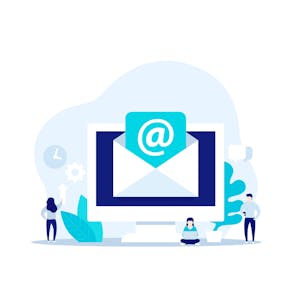
Email continues to produce an exceptionally high ROI as compared to other marketing channels, and email newsletters are one of the easiest ways to stay in front of your audience and to nurture both existing and potential customers. Email newsletters differ from other types of email marketing campaigns because they allow business owners to include a multitude of important information – from industry insights and travel tips to new product and tour offerings – in a single piece of correspondence.
Newsletters also tend to be less transactional in nature. Consider your email newsletter like a traditional newspaper. Sure, there are some promotions included, but the value of a newsletter is in creating high-value, compelling, free content to your subscribers and sharing your industry expertise.
 Pro tip: If you haven’t already, be sure to include a newsletter signup form on your website to grow your email list and capture potential customers’ information.
Pro tip: If you haven’t already, be sure to include a newsletter signup form on your website to grow your email list and capture potential customers’ information.
Read on for email newsletter content ideas, best practices, and design tips.
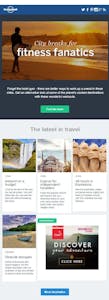
The versatility of email newsletters is both a blessing and a curse – with so many different directions and content types to choose from it can be difficult to choose what information to share. To determine what to include in your newsletter, start by thinking about your target audience and the types of content that typically resonate with them. If you’ve written blog posts, created content for social media, or sent other email campaigns take some time to evaluate the success and engagement of each of those to help identify what hits home with your followers.
Another simple way to approach your content priorities is to sort by relevancy. If any information you intend to share is time-sensitive – for example, your seasonal reopening date or any upcoming holiday promotions – they should take precedent over other evergreen material such as local travel tips or your insider insights
That said, a great newsletter contains diversified content, so be sure to include both those highly-relevant, time-sensitive business updates as well as more fun and playful tips and insights. Whether you provide an industry tip or share a cute video of the company dog, this email should demonstrate your expertise and contain fun information about your business. Strive for a balance between general informational content and topics that are unique to your business.
 Pro tip: Work off of a content calendar when scheduling out your email newsletters. By sending your newsletter out on a regular timeline – say, monthly or quarterly – you can always save less time-sensitive content for the next edition.
Pro tip: Work off of a content calendar when scheduling out your email newsletters. By sending your newsletter out on a regular timeline – say, monthly or quarterly – you can always save less time-sensitive content for the next edition.
These are just some of the many content possibilities for your email newsletter. Remember that your newsletter is the perfect place to be creative and let your brand identity shine through, so have fun with it!
Once you’ve identified the types of content that are of the most interest to your audience your email newsletter can be as long or as short as you want it to be. While we recommend that most pieces of email marketing are short and to the point, the style and purpose of an email newsletter often lend to a longer format. Customers expect more information out of a newsletter so don’t be afraid of creating a longer than normal email here!
One example of how to structure your email newsletter follows:
 Email Newsletter Best Practices
Email Newsletter Best PracticesNow that you have an idea of what to include in your email newsletter, focus your attention on these best practices to make the most of this marketing channel.
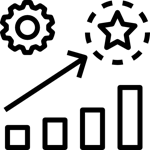 Set Goals
Set Goals As with any other marketing campaign, goal setting is essential for growth. What do you want to get out of this email newsletter? If you’re hoping for more bookings, you could focus on highlighting promotions and specials. If your goal is to drive traffic to your website, sharing engaging content like blogs and industry tips could drive more clicks. Setting goals at the start of the planning process will help you definite the content of each newsletter.
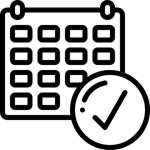 Create a Schedule
Create a Schedule Newsletters see the most success when they stick to a set schedule. This way, your audience knows what to expect, and there shouldn’t be any surprises on your end when it comes to writing content and designing the email. As a general rule of thumb, you should send out an email newsletter at least once a month, and if you have a lot of content to share, you can even send them more often.
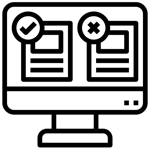 Use the Right Platform
Use the Right PlatformChoosing the right email marketing platform is essential for sending newsletters and other campaigns with ease. Some things to consider include the versatility of templates, budget, analytics tracking, and A/B testing.
 Keep the Design Simple
Keep the Design Simple When it comes to the layout and content of your email newsletter, less is more, especially since online readers have short attention spans (and a full inbox!). Start by keeping the content within 600 pixels wide so that users don’t have to scroll from side to side. You should also make the content scannable by using standalone titles, bullet points, and images, and breaking the key points into distinct sections.
Many email newsletters are formatted in thirds with a headline, body text, and a CTA. Follow this principle if it makes sense with your content. Remember to pay attention to the colors you plan to use to set the mood of the newsletter. One technique is to highlight important aspects of the email, like the CTA, with blocks of color to make the content pop.
Other ways to catch the attention of your readers is to add animated GIFs, include a short video, and use background patterns. Play around with the templates available to you in your email marketing platform to see what looks best!
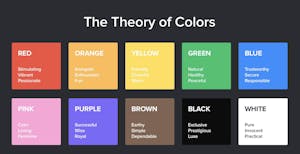
You can learn more about best practices for subject lines, body copy, and mobile responsiveness in our guide on email marketing basics for tour operators.
 Pro-Tip: When it comes to the format and layout of your email, try following the Inverted Pyramid model which suggests that you start with the most important piece of information first then gradually prioritize other information throughout the rest of the email by order of importance.
Pro-Tip: When it comes to the format and layout of your email, try following the Inverted Pyramid model which suggests that you start with the most important piece of information first then gradually prioritize other information throughout the rest of the email by order of importance.
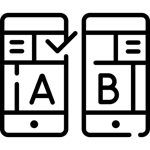 A/B Test and Track Success
A/B Test and Track SuccessAfter getting the ball rolling with your email newsletter, don’t forget to track important metrics like open rate, click-through rate, and unsubscribe rate. As you digest the data, watch your email frequency and timing. Sending emails too often can result in a high unsubscribe rate, but sending emails more infrequently might mean your readers are overlooking them.
Use A/B testing to figure out the best time and day, as well as frequency, to send your email newsletter for best results. Strive for the most opens and click-throughs and the fewest unsubscribes. You should also test different design and content to see what resonates best with your audience.
Email newsletters serve as an additional touchpoint for your customers and an opportunity for you to establish your business as a leader in your industry. To help your email newsletter achieve maximum reach, be sure to build and segment your email list and use CTAs to drive bookings. Get more email tips and tricks from our email marketing guides.